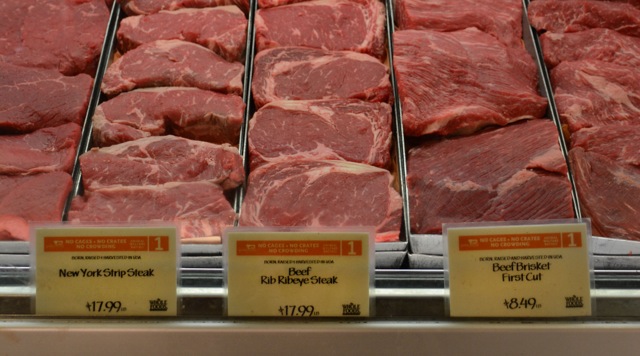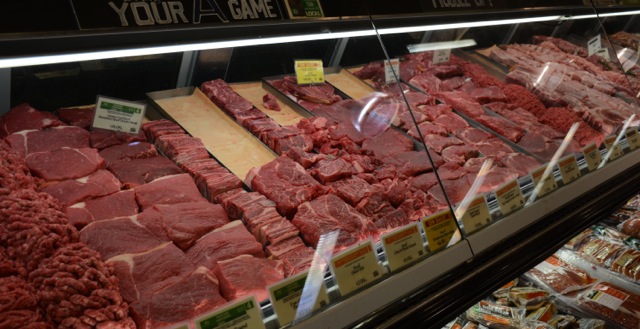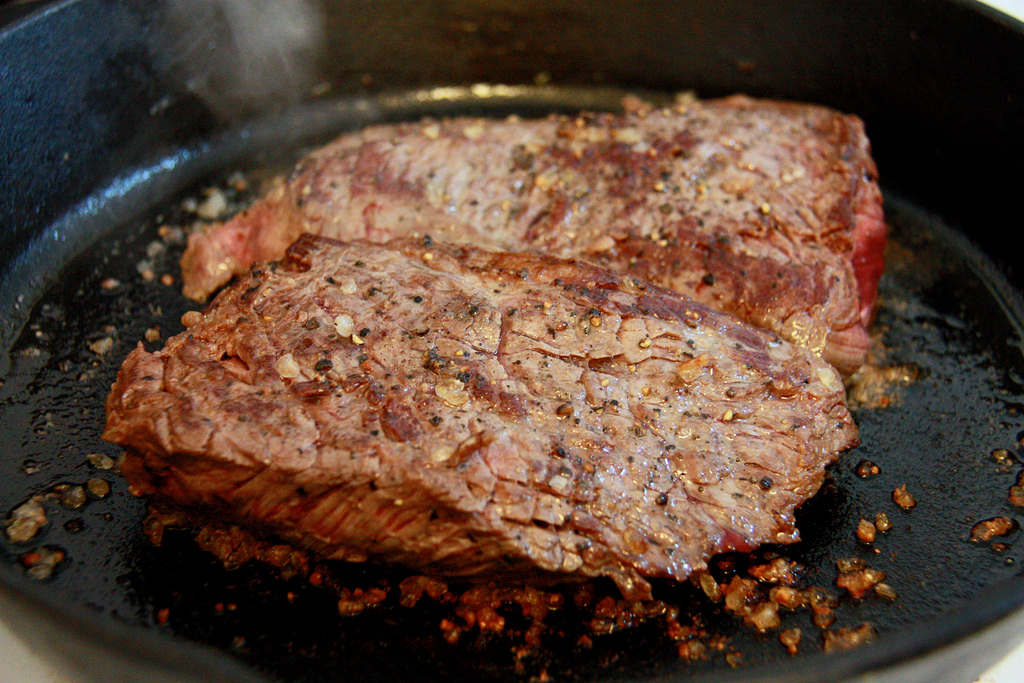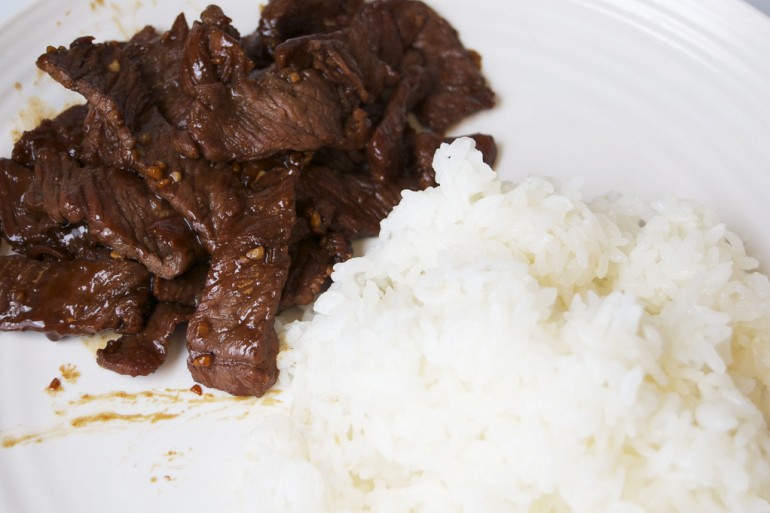Steak. The holy grail of all cuisine. But as much as you may love it, how much do you actually know about steak? Do you know exactly what a New York strip steak is? Or are you just ordering it because it sounds fancy? Have no fear; use this crash course to learn all about the wonder that is beefsteak.
Where Does It Come From?

Photo by Emily Waples
In the US, beef cuts are divided into “primal cuts”, which are large sections of the cow from which the steaks are butchered. The following are the primal cuts, along with the most popular steak types that come from them.
Chuck
The chuck starts from the cow’s neck and extends to its ribs. The most common steak cuts from the chuck include the 7-bone steak, named because it includes a cross cut of the shoulder blade that looks like a “7,” and the chuck steak, which is a thinner version of the 7-bone steak used for grilling or broiling.
Rib
As the name suggests, steaks coming from this primal cut are located in the rib section of the cow. Prime ribs are bone-in steaks known to be filled with flavor and are usually roasted. Rib-eyes don’t have bones and are heavily marbled (which means they have a lot of fat running through the steak), making them flavorful and tender.
Brisket
This primal cut comes from the lower chest of the cow, and is most often used for barbecue or slow cooked in a Crockpot. Brisket is also used for pastrami and corned beef.
Shank
Beef shanks are the meat from a cow’s legs. Shanks are very tough, so they’re almost exclusively used for soups and stews.
Plate
The plate is located directly below the ribs of the cow. Skirt steaks are cut from the diaphragm muscle located in the plate and are usually very flavorful. Popular uses of skirt steaks include Mexican fajitas and Chinese stir-fry.
Loin
Ah, the loin. This large section between the ribs and the butt is divided into subsections, including the tenderloin and short loin. Many classic steak dishes like T-bone steak and filet mignon are cut from this area. T-bone comes from the short loin, and, to no surprise, has a T-shaped bone that separates a smaller section from a larger one. The tender, large section of the T-bone is called a New York strip steak without the bone, or a Kansas City strip steak with it. Sirloin steaks come from the lower back of the cow and can be grilled, broiled or barbecued. Chateaubriand steaks come from the tenderloin, and are generally high quality and served roasted. The most prized cut of all, the filet mignon, also comes from the tenderloin. Filet mignon is incredibly tender, and is usually served much rarer than other cuts.
Round
Aka the butt. The round usually does not have much marbling, and is thus one of the tougher cuts of beef. Round steaks are usually braised or roasted.
Flank
The last primal cut of beef is the flank, which comes from a cow’s abdominals. Since they are rather tough, flank steaks require slow cooking methods or marinades to improve tenderness. Common dishes using flank steaks are Chinese stir-fry and London broil. Fun fact: Lady Gaga’s meat dress at the 2010 MTV VMAs was made of flank steak.
For more…
Here’s a guide to relative prices of different cuts.
Is It High Quality?

Photo by Emily Waples
No, steak grades do not tell you how well the cow did in school. Beef grades, given by the United States Department of Agriculture, tell you the quality of the meat. The grades, from lowest to highest, are canner, cutter, utility, commercial, standard, select, choice and prime. Prime beef is the highest quality, and has the most marbling. Generally, supermarkets sell choice and select beef (sometimes prime!), and anything below select is not sold to the general public.
How Do I Order It?
When ordering a steak, it is customary to include a degree of cooking for the chef to prepare your meat exactly how you want it. The degrees of cooking are raw, very rare, rare, medium rare, medium, medium well, well done and overcooked. These are pretty simple to figure out, as going from raw to overcooked increases how much the meat is cooked and decreases the redness of the final dish.
How Do I Cook It?

Photo by Kathleen Lee
Steak can be prepared many ways—one of the most common being a simple grill or sear with some kind of seasoning. Even just salt and pepper will do the trick for a good piece of meat. However, there are steak dishes out there with names that may not indicate their preparations right away. Here are some of those tasty variations:
Beef Wellington
Beef tenderloin coated with liver pâté, mushrooms, herbs and onions, which is wrapped in a puff pastry and then baked.
London broil
Flank steak marinated for hours on end, then broiled or grilled over high heat. Usually served cut in thin strips.
Bulgogi

Photo by Leah Nordman
Korean dish of thinly sliced sirloin beef or other cuts of similar high quality. The meat is marinated in soy sauce, sugar, sesame oil, garlic and pepper and then grilled—usually done right in front of the patron if prepared in a restaurant.
Steak tartare
Minced raw beef usually served with capers, onions and seasoning such as cracked pepper. Can be served with raw egg yolk on top and with rye bread.
With all this information, you’re now well-equipped to wow your friends the next time you’re at a fancy restaurant, ordering your perfectly cooked, medium rare chateaubriand steak. Or, you can impress your date right at home with this date night skirt steak. Go and share your newfound knowledge!
For more information, click these:
- Steak Enthusiast
- Make a Fancy Steak Dinner In Your Kitchen For $10 Or Less
- The Ultimate Steak Glossary


